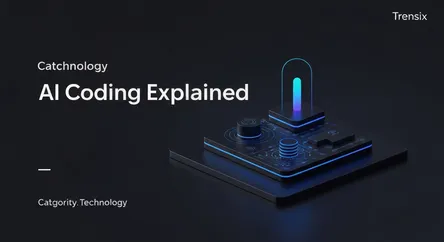Technology
AI Coding Explained

Discover how Artificial Intelligence is transforming software development, from autocompleting code to generating entire functions and accelerating workflows.
What is it?
AI coding refers to the use of artificial intelligence tools to assist humans in writing, debugging, and managing software code. These tools, often called AI assistants or copilots, are powered by large language models (LLMs) trained on vast amounts of public code. They integrate into development environments and can suggest code snippets, complete entire functions, translate code between languages, identify bugs, and even explain complex code sections in plain English. Popular examples include GitHub Copilot and Amazon CodeWhisperer.
Why is it trending?
AI coding is trending due to significant breakthroughs in generative AI, making these tools more powerful and accessible than ever. The promise of a massive boost in developer productivity is a key driver. Businesses see it as a way to accelerate development cycles, reduce costs, and innovate faster. As developers share success stories of how these tools help them overcome creative blocks and automate repetitive tasks, adoption is spreading rapidly across the entire tech industry, from startups to large enterprises.
How does it affect people?
For developers, AI coding assistants act as a powerful partner, speeding up tasks and lowering the barrier to entry for learning new programming languages. This allows them to focus more on high-level problem-solving and system design. For businesses, this translates to faster product launches and more efficient use of engineering resources. However, it also introduces new challenges, including the need to verify the quality and security of AI-generated code and prompts a discussion about the future skills required for software engineering roles.